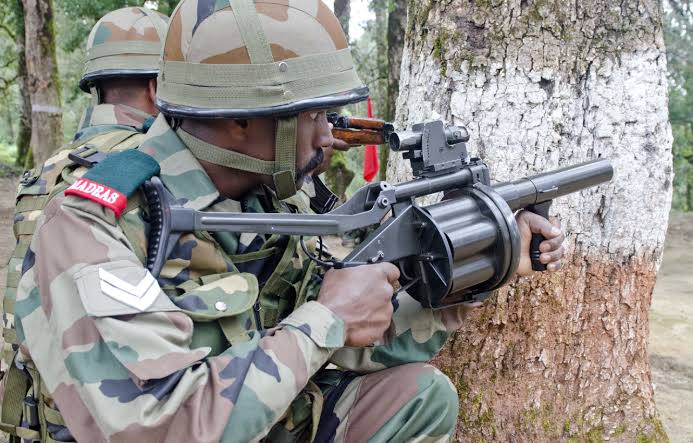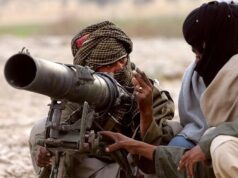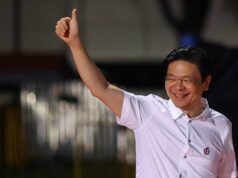Dilemma faced by the Armed Forces

The army operates in two distinct settings – peace and war. Sand-model exercises, presentations, and social presence distinguish peace settings.
On the other hand, wartime settings are characterized by intense operations, brutal violence, and suffering. Qualities that make for success in the two sets differ. Knowledge, presentation skills, and the ability to blend in almost corporate-like settings are necessary for the peacetime army. For wartime, however, only one quality is needed – being a ‘dabang’.
In English, ‘dabang’ is best translated as ‘cocky,’ i.e., a defiant man with an attitude. When the devil whispers to him, ‘The storm is coming,’ he counters it with, ‘Why should I care? I am the storm.’
A dabang has balls. More than being merely brave, he is defiant. Consider the scenario in which Maj Hoshiar Singh delivered the qualifying act which won him the nation’s highest-gallantly award – Param Vir Chakra.
During the Indo-Pak war of 1971, 3 Grenadiers regiment spearheaded the Shakargarh area. On 15th December, the unit was assigned to establish a bridgehead across the Basantar River.
This was not easy, as the river had deep minefields on both sides and was heavily guarded by the Pakistani army. Major Hoshiar Singh was the commanding officer of the C Company, instructed to capture the locality of Jarpal.
The company came under intense shelling and crossfire from medium machine guns because it was a heavily fortified enemy position. Undeterred, Maj Hoshiar led his troops forward and engaged the enemy in a fierce hand-to-hand fight.
The enemy responded with a counterattack which the men under Hoshiar Singh beat back. Then came another, and then yet another. Two of these three were heavily supported by armor. But the company under Major Hoshiar Singh stuck on.
They were brave. But, more importantly, they were dabangs – defiant. To hell with the casualties and suffering, C company under Hoshiar Singh would not let the Pakis take the locality back. That is being a dabang. That is pure defiance.
Defiance is a quality nonpareil. A defiant person does not count costs. He would have quit if Major Hoshiar Singh had started a cost-benefit analysis. Any sane man would have.I have met Maj Hoshiyar Singh.
He was one of our instructors at the Indian Military Academy. I can confirm that he was a very quirky man. Also, he was quite uncouth. But he was pure steel.
Look up the fine print details of any battle of any campaign, and you will come up with similar scenarios.
In the action of Longewala, in which Maj Chandpuri provided leadership to a company of 23 Punjab being attacked by Pak tanks, the same insane defiance can be seen. Or look up details of battles fought by Captain Vikram Batra in Kargil.
In all cases, you will find leaders stuck when a realistic appraisal would have suggested that it would be better to let go. Just as Yahya Khan decided when faced with the Indian army in East Pakistan in 1971.
When a defiant soldier takes a stand, his resolve is of the ‘over my dead body’ type. These are people with an attitude who have chutzpah and see only their side of logic. People who see both sides normally succumb to the immediate situation.
In an intense battle, they do not press home an attack when the chances are slim. They also do not hold on to the defences to the ‘last man and last round.’ It requires a bizarre type of stick-to-itiveness.
If defiance is the quality that wins wars – and winning wars is undoubtedly the raison d’etre for having armies – it is common sense that such resolute soldiers must be promoted over those who excel in the peace-time requirements of the army. But, as all soldiers know, that is not the case.
The problem is that while they are likely to produce excellent results in war, they usually cannot soldier in peacetime. SLA Marshall, in Men against Fire, tells us that ‘In our interviews, we repeatedly found that there were men who were consistently bad in the training period, marked by their faults of laziness, unruliness, and disorderliness, and who just as consistently became lions on the battlefield with all the virtues of sustained aggressiveness, warm obedience and thoughtfully planned action.
When the battle was over and the time came to coast, they almost invariably lapsed again. They could fight like hell, but they could not soldier.’ The book Crises in Command mentions an unobtrusive indicator associated with the notion of a good officer, which is ‘getting low marks on loyalty.’
Such a man is unwilling to acquiesce in the policies of his superiors without debate. He is likely to have an independent mind. The thinking seems to vibe well with the Auftragstaktik (mission type control) that believes that ‘an order is a good basis for discussion.’
The problem, of course, is that a defiant person will be defiant on a 24/7 basis. It Is not possible for a person to be defiant in war but meek in peace time.
This dilemma between the war and peacetime requirements of the army will always remain. Gen Moshe Dayan, however, put things in perspective. He noted that the difficulties in managing wartime soldiers in peace are far lesser than getting results from the peacetime soldiers in war. ‘It is better to struggle with a stallion when the problem is how to hold him down than to urge a bull who refuses to budge.
How nice it would be to promote soldiers with skills for a peacetime army and ask them to start being defiant in times of war. But being defiant is a matter of temperament, not skill.
Temperament is not something you can change at will. It does not work with an on-off switch. If an organization expects its officers to fight like Genghis Khan in battle, it cannot expect them to behave like Cinderella in peacetime.
Officers who are correct in their daily dealings in peacetime will never fight like the devil in wartime. Take your pick.
The Indian Air force does a far better job of it than the Indian army. They want their fighter pilots to push the envelope in a dogfight with the enemy. To have such plucky fighter pilots flying their planes when the war starts, they consciously work to develop the spirit of a fighter pilot in peacetime.
No station commander of a flying station or Commanding Officer of a fighter squadron will even dream of ticking off a pilot who gets drunk and creates a ruckus in the air-force station or plays pranks on senior officers.
In the Indian army, no station commander or commanding officer will ever miss the chance to punish such a soldier.
This dilemma has not been solved by any army satisfactorily. While the Indian army faces the same predicament as others, the impact is much higher here than there. This is so because an Indian, by default, is far more docile than a westerner.
When justified motivation is readily available to behave in a docile, respectful manner, he does not have to work hard to acquire that state. He reverts to his default. Look carefully at the officers of today.
Do they look more like devils or more like academic, respectful, and erudite gentlemen? Sometimes it is hard to distinguish a fauzi Major from a corporate executive unless he is wearing his uniform.
The Department of Military Affairs is busy reorganizing the armed forces. This seems the right time to solve this dilemma. The nation wants armed forces that win wars, not solve sand-model problems.




